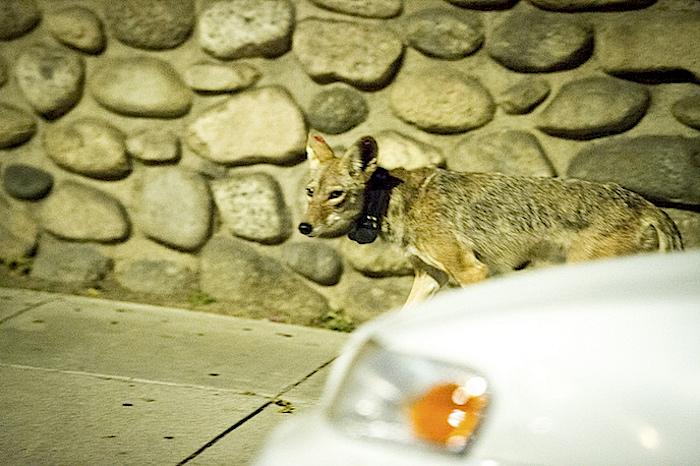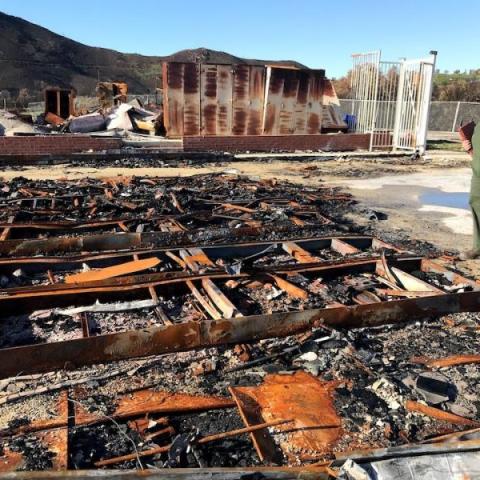
This remote camera photo shows either C-146 or one of her pack mates near the LA River before C-146 was captured/NPS
Coyotes are opportunists, and in Los Angeles some of them apparently see a lot of opportunity. Since late-September, National Park Service researchers have been watching a young female coyote as she makes short forays into the urban core of the city of angels.
The young female, approximately seven to nine months old, is now known as 'C-146' because she is the 146th coyote tracked as part of the National Park Service study, though only the third in urban core of Los Angeles. She was captured early on the morning of September 23, outfitted with a GPS collar, and then released in the same location.
"We're very interested to learn how this animal is using the Los Angeles River," said Justin Brown, biologist with Santa Monica Mountains National Recreation Area. "So far, all of her recorded GPS locations have been confined to a two-mile or so stretch on both sides of the river."
C-146's GPS collar is programmed to record an average of eight GPS locations over a 24-hour period.
Brown believes C-146 is from a pack of at least five individuals: three juveniles and two adults. They were captured on camera together in early September. As a juvenile, she will provide insight into how long the juveniles in this area stay with their parents and what routes young animals may take to disperse and find their own territories, Park Service researchers say.
Although National Park Service researchers studied coyotes from 1996 to 2004 in parts of Los Angeles and Ventura counties, they only began studying urban Los Angeles coyotes this past May.
As for the other two animals in the pilot project, researchers continue to track the Silver Lake coyote known as C-145, but the battery in C-144's collar recently failed. C-144, who spent most of her time just west of downtown Los Angeles, is believed to have one of the most urban home ranges of any coyote ever studied and had recently made some interesting movements to the west.

An uptown girl? C-144 is believed to be one of the most urbanized coyotes/NPS
You can read about what researchers learned about C-144 before her collar failed on Gridlocked, the urban wildlife blog of Santa Monica Mountains National Recreation Area.
Coyotes are medium-sized canids that inhabit most of North America. Coyotes in Southern California are often the subject of negative media attention, but serious coyote conflicts with humans are rare. In order to reduce the likelihood of a negative interaction with a coyote, residents should be careful not to feed wildlife, either intentionally or unintentionally.


 Support Essential Coverage of Essential Places
Support Essential Coverage of Essential Places







Add comment